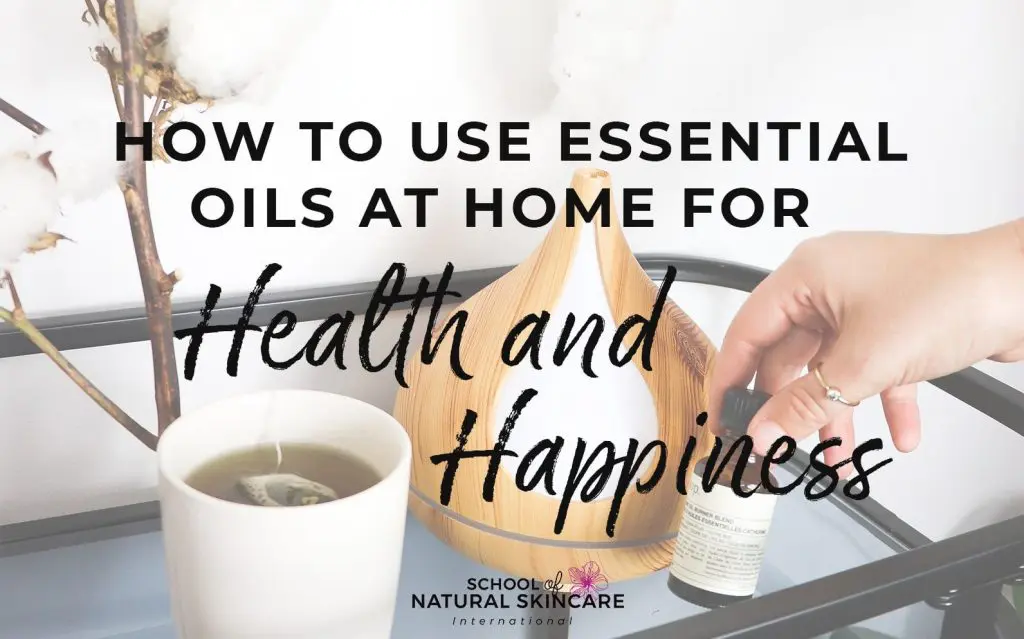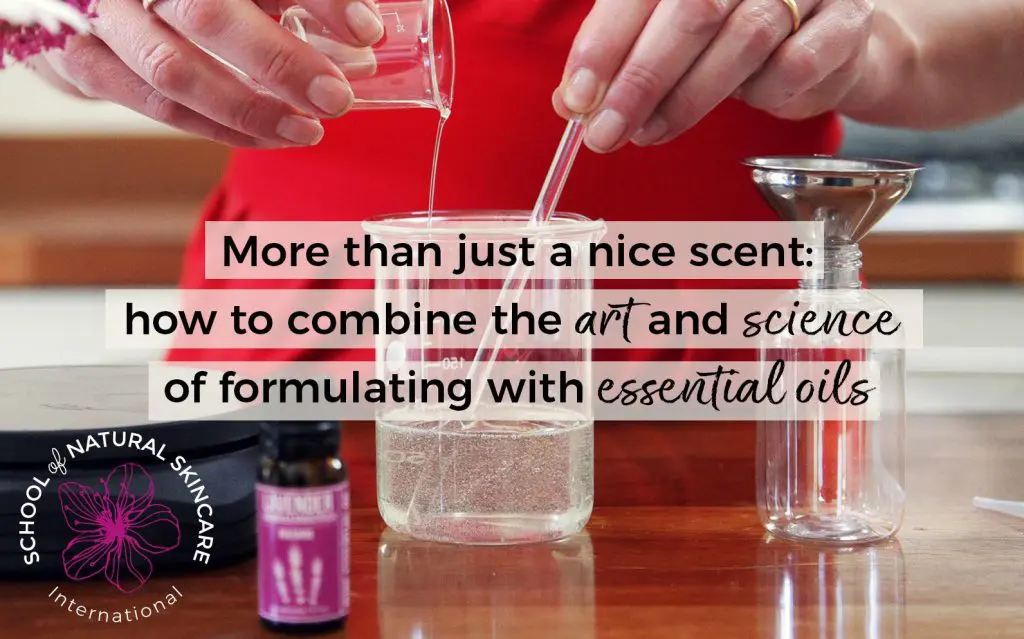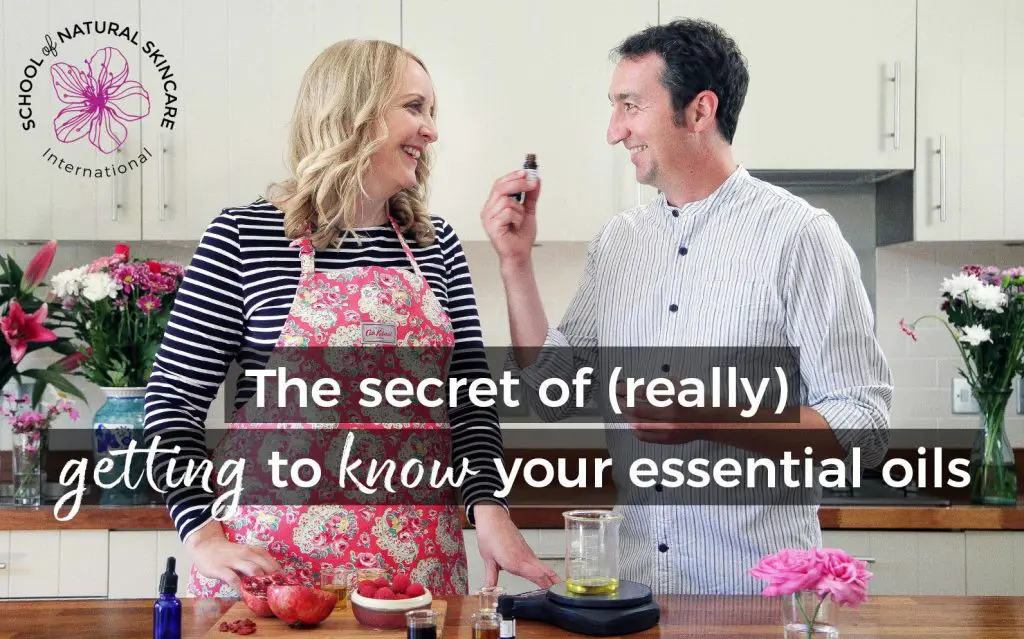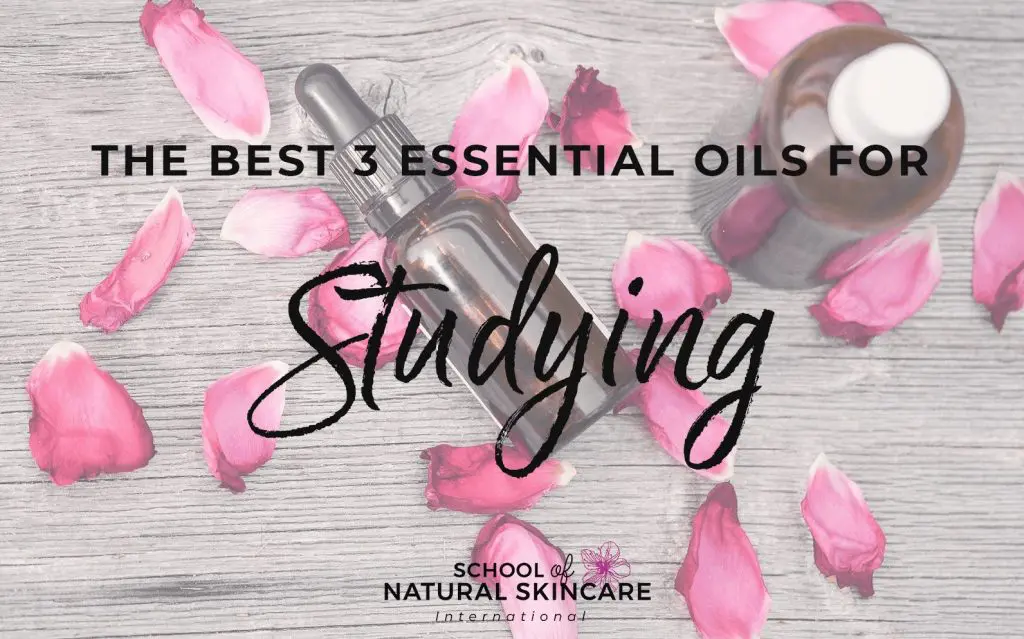Essential oils are natural plant extracts derived through various means (mainly distillation) from plants of all kinds for our enjoyment, health and wellbeing.
As natural chemical compounds, essential oils are made up of chemical constituents which possess wide-ranging therapeutic properties that work with our body to help it to heal, repair and regenerate as well as improve the general function of organs and entire systems.
It is important to mention that while essential oils offer wide-ranging therapeutic properties, COVID-19 is a new virus that we don’t yet know enough about to understand how essential oils and other natural treatments will respond to it. In addition to that, there is currently no known cure for COVID-19 – all current treatments help the body while it tries to heal.
We’re therefore not able to provide advice specific to the virus, but what we can do is offer suggestions that may help with general immunity, health and wellbeing and help to combat things like the common cold and flu.
At this point, it is important to understand that essential oils are highly concentrated chemical compounds and they should be handled with care. For the successful use of essential oils, please follow the industry standard safety advice and guidelines, and always check the safety data for each essential oil, often referred to as a “contraindication”.
- For external use only – do not ingest.
- Do not apply directly to the skin, always use diluted in a carrier substance, eg carrier oil.
- Do not use on babies of 0-6 months***.
- Safe dilution levels for babies and toddlers (up to 4 years old): 1%***.
- Safe dilution levels for children aged 4-8 years old: 1%***.
- Safe dilution levels for healthy, strong, fit 8 year olds and over: 2%***.
- Safe dilution levels for the elderly, frail or ill: 1%***.
- Avoid contact with the eyes and sensitive areas of skin.
- Keep out of reach of children and pets.
- Store in a cool, dark and dry place.
- Keep away from direct sunlight.
- Keep the bottle cap tightly sealed.
- Always patch test first before using.
- Always check the safety data of each essential oil before using it.
- Key contraindications include phototoxicity/photosensitivity, pregnancy (there are many oils contraindicated for pregnancy), and certain health conditions.
***This dilution information is for guidance only. It depends on the individual, their health, any occurring symptoms, issues or concerns. Age is sometimes a difficult factor to predict. It is always best to seek the expert advice of a qualified professional who can advise accordingly for each individual.
How do essential oils work?
Julia Lawless sums this up perfectly in her book, The Encyclopedia of Essential Oils where she explains that they have three distinct modes of action: pharmacological, physiological and psychological.
She states that,
“The pharmacological effect is concerned with the chemical changes which take place when an essential oil enters the bloodstream and reacts with the hormones and enzymes, etc;
The physiological mode is concerned with the way in which an essential oil affects the systems of the body, whether they are sedated or stimulated, etc;
The psychological effect takes place when an essence is inhaled, and an individual responds to its odor.”
Taking this advice into consideration…
On occasion it might be suitable and most appropriate to simply inhale the aroma or be surrounded by the scent of specific oils.
However, if we can take advantage of the benefits we get from inhaling the aromas, and the benefits we get from applying to the skin, the best results will be experienced.
When we inhale the aroma, we get an immediate response. The aroma is usually pleasing and we begin to process thoughts and feelings about it. The smell triggers nervous impulses which often changes behaviours and the three combined – the emotional response, the thought patterns and the nervous impulses – begin to change our thoughts, feelings and emotions.
If the right oils are used, we can begin to feel differently, think differently, behave differently, view our world, our experiences and our situation differently. It is also probable that we will begin to feel relaxed and calm, or stimulated and awake.
What we notice when we consciously inhale a pleasing aroma is that it is impossible to think about anything else at that very moment, other than the pleasing aroma and how much we like it.
If this is done over a few minutes, that can have a profound effect on our entire psychological and emotional state of being.
On other occasions it might be better to apply essential oils to the skin via a carrier substance – a carrier oil, during massage or by using a skincare product.
Now, when applied to the skin, essential oils have a triple beneficial action which you can read more about in our article, The best essential oils for skin (and each skin type).
Essentially, we get the benefit of essential oils and the carrier ingredients providing nourishment and healing for the skin, and the added benefit of the chemicals of essential oils mixing with the chemicals inside our own bodies, helping to improve the functions of organs and entire systems. Our in house aromatherapist Gareth says
If we can get the combination of both, inhalation and application to the skin, the positive effects on our health and happiness will be amplified.
Inhalation gives us an immediate stimulus that helps us to feel better and think better. Then application on the skin and absorption into our bloodstream creates an effect that sustains the changes over a longer period of time.
Consistent and regular use of essential oils over time will greatly affect and positively contribute to our overall health, happiness and wellbeing.
PLEASE NOTE:
Essential oils are designed to be complementary to conventional treatments and medicine, not a replacement for them. They offer us a unique and personal way of looking after ourselves each day at home. They can help us to stay well and healthy and keep injury and illness at bay. They can also add to our ability to recover quickly from illness, dis-ease and injury.
However, if symptoms persist, please consult your doctor. In situations where life-concerning illnesses or injuries exist, please consult your doctor and seek specialist advice from a qualified and practicing aromatherapist before using essential oils.
Our recommended essential oils
Stimulating essential oils that are useful for tiredness, lethargy, malaise:
Peppermint, eucalyptus, rosemary, thyme, scotch pine and lemongrass.
Refreshing essential oils:
Bergamot, orange, lemongrass, lime and geranium.
Essential oils for study, concentration, focus and enhanced memory:
Please read our article about this here.
Essential oils that are relaxing, calming and fortifying:
Lavender, mandarin, bergamot, geranium, frankincense, chamomile, benzoin and sandalwood.
Essential oils for cold and flu-like symptoms, respiration and general immunity:
Eucalyptus, tea tree, lemon, lemongrass, lavender, rosemary, marjoram, myrrh and peppermint.
Essential oils for digestion:
Lavender, chamomile, peppermint and geranium.
Essential oils for children aged six months to four years:
Niaouli, tea tree, lavender, chamomile and mandarin.
Essential oils for teenagers:
Lavender, bergamot, geranium, eucalyptus, frankincense, rosemary, palmarosa, tea tree, benzoin and marjoram.
Essential oils for sport:
Lavender, marjoram, black pepper, rosemary and chamomile.
Essential oils for meditation:
Frankincense, sandalwood, cedarwood, patchouli, lavender and neroli.
Sensual essential oils:
Lavender, rose, jasmine, ylang ylang, sandalwood, vanilla, benzoin and geranium.
Essential oils that combat stress and anxiety
Read our article, 10 essential oils to combat stress and anxiety and encourage better sleep – naturally!
How to use essential oils at home
The following are some suggestions for how you could use essential oils at home and work. These ideas follow general guidelines and are designed for you to make small batches, as and when needed, for your own therapeutic purposes.
Please remember to follow the safety advice and check the safety data for each individual essential oil.
For best results, seek a qualified expert who can offer personalized and tailored solutions.
There are some additional ideas, recipes, blends and product making instructions shared in our article Energizing and revitalizing essential oils for spring.
You can use them in an oil burner or oil diffuser
Check out our article on getting the most from your essential oil burner or diffuser.
Inhale the aroma from the bottle
There are a couple of ways you can do this.
You can place a few drops (two to three) on a tissue, handkerchief or cotton wool pad
Eitherither inhale it directly; or you can place it in your breast pocket and let the aroma drift upwards.
Top tip:
Put your tissue, handkerchief or cotton pad in the palm of your hand. Place your hand in the prayer position. Put your nose between your thumbs and in between your palms. Then inhale and enjoy the aroma.
Carry your favourite essential oil with you wherever you go.
Take it out and inhale the aroma when you need it the most.
Top tips:
Remember not to leave the top off the bottle for long; two minutes maximum.
Do not spend too long sitting and inhaling without a break. One minute maximum, return the cap to the bottle, pause for 30 seconds and repeat if you’d like.
You could do a daily or regular steam inhalation
Most people love going into steam rooms with their beautiful fragrances and warmth, and the good news is you can recreate some of that experience at home! Most people will wait until they are unwell with a cough, cold or flu-like symptoms, but there is nothing stopping you from making it a daily or regular practice.
Steam inhalation with the right essential oils can help to open up breathing pathways, reduce inflammation, ease coughs and congestion. It can also help to clear the mind, aid relaxation, revive the senses and lift the mood.
The essential oils mentioned above can help to kill potentially harmful microbes but again, we prefer to err on the side of caution because we don’t know the effect they will have against COVID-19. But generally speaking they may help to maintain a healthy mind and body.
- Boil some water and add it to a bowl.
- Place two to three drops of essential oil into the bowl.
- Place a towel over your head and your face over the bowl of water.
To begin with, the water will be extremely hot and it might be hard to stay under the towel and over the bowl for a long time. Just short bursts is fine until you are able to stay under the towel for one minute.
Top tip: replace the drops of oil every three minutes. The water will be extremely hot and the oils will quickly evaporate.
Make a bath soak or foot soak
Here is a great recipe for a foaming orange, frankincense and sandalwood mineral bath soak. Of course, you can swap the essentials out for ones that are better suited to your needs and preferences.
If you are able to have a bath, it will work wonders. A bath is great, because it helps to:
- Warm the muscles, joints and bones.
- Encourage circulation.
- Slow down, deepen and lengthen the breathing rhythms.
- Reduce the heart rate.
- Encourage rest and relaxation.
- Soothe digestion.
If you don’t have a bath, a foot soak/bath will work well. For added pleasure, sit next to your oil diffuser or oil burner!
Can you add essential oils directly to the bath?
This is not something we would advise. You should only ever add essential oils to a bath or foot bath diluted into a carrier substance.
Oil and water do not mix, so the essential oils will just float on the surface. When they come into direct contact with the skin, they may cause irritation.
In addition, essential oils are volatile, which means they evaporate when exposed to air. This process happens even faster when they are heated. In a hot bath or foot soak, the essential oils won’t last very long and you won’t get many of the benefits you seek.
You could make a simple massage oil
This could be as simple as using one or two carrier oils and one to three essential oils. The best massage oils are grape seed oil and sweet almond oil, and they are very cheap!
You can then add your essential oils to the blend to make your simple massage oil.
A simple 100g massage oil formula would include 98% carrier oil and 2% essential oil. For children under 4 years old, the elderly or frail, reduce the essential oil dilution to 1%.
Make some simple skincare products
You could make simple products like balms, butters, oils and serums or go one step further to make some creams and/or lotions.
You can do this by joining one of our online classes like our Certificate in Making Natural Skincare Products.
If that is a step too far right now, we also have a number of recipes available in our Free Natural Beauty Recipe Book.
Free Online Organic Skincare Formulation Course
Fundamentals of Skincare Formulation
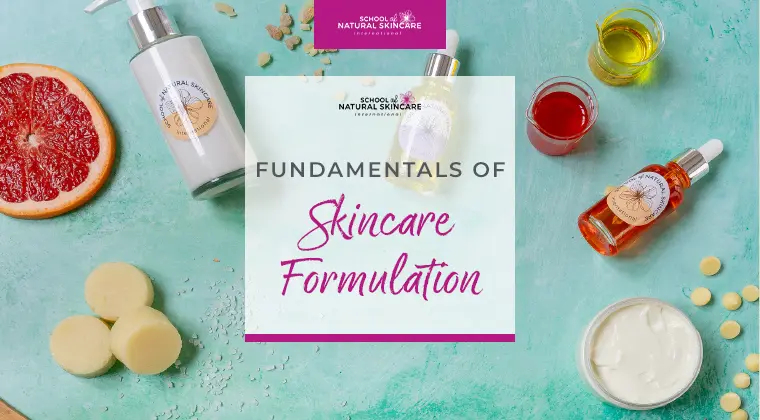
Learn the essentials of skincare formulation with our FREE course!
If you’re confused by all the misleading information out there, we’re here to guide you. Learn how to create natural and organic products confidently, using industry best practices, under the guidance of professional cosmetic scientists.
Exclusive for our newsletter subscribers. Sign up now.
We look after your data in accordance with our privacy policy.
What you’ll learn:
- Formulation Foundations: The basics of cosmetic chemistry and skincare formulation.
- Bodycare: Make a shea-butter-rich body moisturizer with our pro formula.
- Facial Skincare: Rejuvenate your skin with our two facial oil formulas.
- Creams & Lotions: Create shelf-stable moisturizers using our tried-and-tested formula.
- Natural Ingredients: Understand the key natural and organic ingredients used in formulations.
Exclusive for our newsletter subscribers. Sign up now and start formulating your own natural products today!
